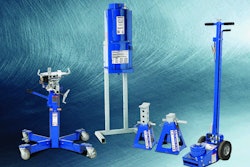When it’s time to select the best tire make/ model as well as retreads that work best for your fleet, there are many questions which need to be answered.
PSI’s Commercial Fleet Tire Digest takes a look at some of those in this month’s issue.
Every fleet is faced with different issues when making this determination based upon their specific operation. Most fleets have vehicles which run under various service vocations, which of course will require specific tires depending on wheel position.
Some of those are:
- Initial tire buying price
- Retreadability of the tire casing
- Fuel economy
- Removal miles
- Susceptibility to developing irregular and uneven wear
- Tire traction
It is only logical that a low purchase price would make the choice easy for a fleet manager and their finance person. However, fleets should understand their full cost of ownership in terms of total cost/mile including retreads; and that the purchase price is only part of the cost equation.
Historically, even though all tires are black and round, they are not created equal. Tread depth, compounds, steel wire gauge and tread design will significantly affect fuel economy, mileage, traction and retreadability. The lowest priced tire may only achieve one retread per casing compared to the higher priced tires which will get two or three retreads.
Fuel economy could be improved as much as three-percent with the more expensive tire designs. Tracking cost/mile over multiple retreads takes some serious effort. It is not simple. The cost calculation should include the initial purchase price, cost of each retread, casing credit, scrap disposal fees, mounting and dismounting charges, tire repair charges and any rebates offered from your tire suppliers.
Tracking miles of the original casing and each retread also becomes challenging. Branding every tire with a unique tire identification number is essential to this process. It is a lot for a fleet to record odometers when a tire is installed or comes out of service. If a tire is repaired and then reapplied on another wheel position, a new set of complexities enter into the equation. Unless a trailer is equipped with a hubometer or an ABS that tracks mileage, determining mileages of trailer tires is almost impossible. Many fleets simply estimate trailer tire miles based on the installation and take-off dates.











